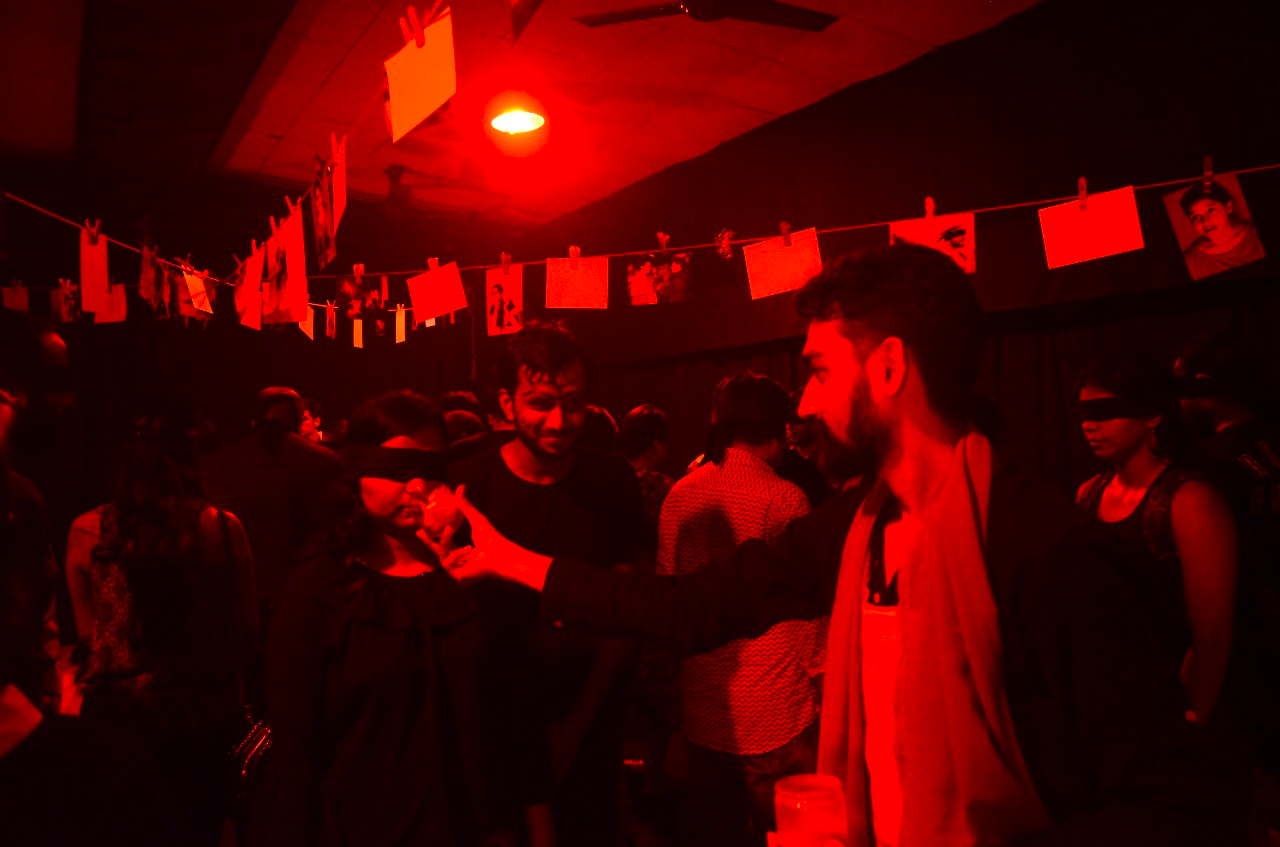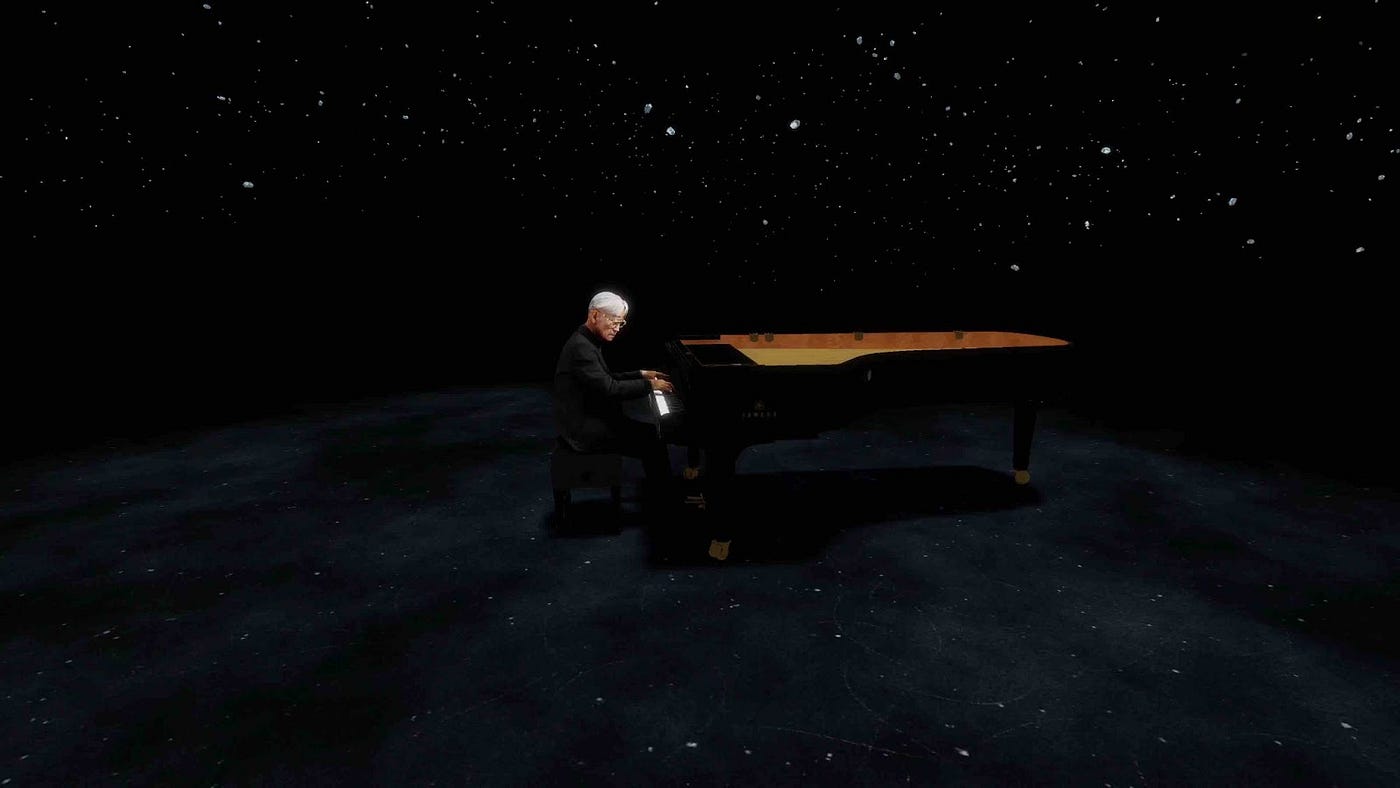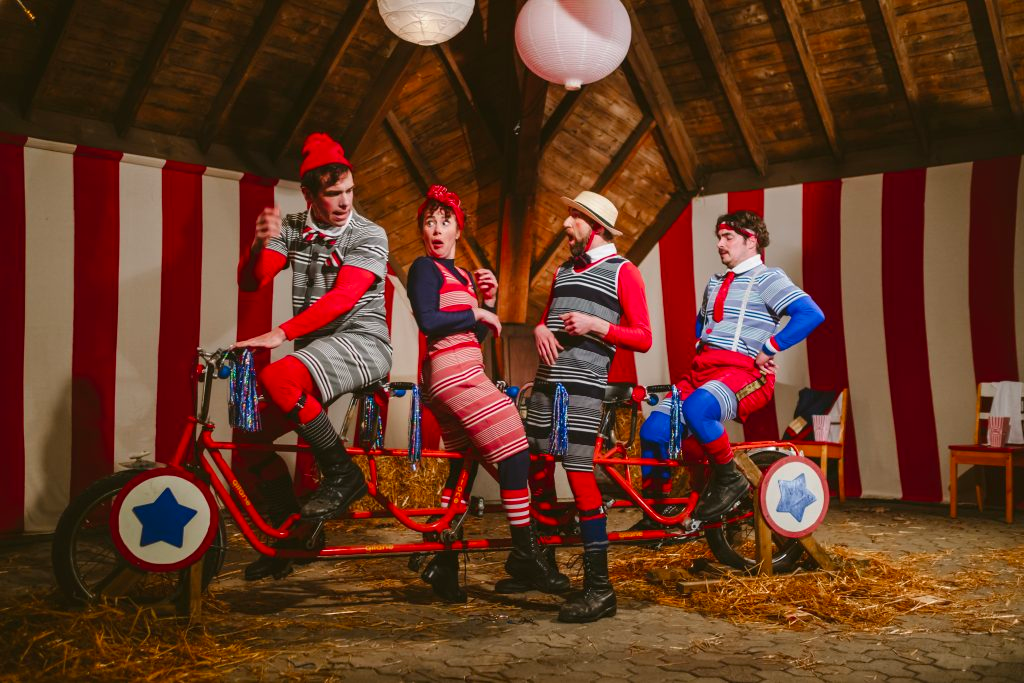
This week our Toronto correspondent Katrina Lat goes hard in TWO cities in Canada with reviews on experiences staged in multiple languages. What UP Canada? You’re making the rest of us look bad. (As usual.)
Plus Allie has a report from a unique performance in NYC and Blake is the latest Review Crew member to engage with solo artist Stepy Kamei’s work.
Looking for more? Hop back in time to the last edition.
Are you a creator who looks upon these reviews with envy? Okay, the positive ones, at least? Then you might want to check out our How To Get Covered By NoPro guide. Want to get listed in our newsletter and have your event shared with our social media following? Submit a listing to Everything Immersive.
Keep No Proscenium free for all by becoming a Patreon backer today!

Darkroom v4.0 — Rangaai Theatre Company
C$15–25; Toronto, Canada; through July 30th
Darkroom V4.0, presented by Mumbai-born, Toronto-based, Rangaai Theatre Company, is an immersive sensory experience bringing to light the “traumatic state of mind, loss, and indignation of mankind through a series of South Asian stories.”
The show uses the analogy of a darkroom, in which the audience is the photographic paper, and the performance itself is the development process. We wandered around the darkroom space examining photos in the dim red light, as well as the writeups on their flipsides detailing stories of abuse, neglect, tragedy, and trauma. Thoughout, actors dressed as darkroom technicians approached us with specific photos and recounted the narrative behind each image.
Eventually, we were instructed to be seated, marking a transition to a more traditional theatre setting. The first act, a performance of Saadat Hasan Manto’s “Khol Do,” took place while the audience was blindfolded. By moving around the room, and utilizing their voices and stomping vibrations to propel the storytelling, the performers achieved an immersive soundscape without the use of technology. These acoustic elements were complemented by subtle touches. Though there was an English-only performance of the show, the show I attended was presented partly in Hindi and Urdu. This first act was performed entirely in Urdu, but despite the language barrier, I was followed the story through the nuances conveyed in volume, tone, rhythm, and tactile sensation.
The second act, Munshi Premchand’s “Kafan” performed in Hindi, followed a more traditional theatrical format. While the language remained inaccessible to me, this barrier increased my focus on the actors’ facial expressions and gestures. Though occasional interactions occurred between the actors and the seated audience, this portion seemed more interactive than immersive.
A trigger warning preceded the final act, “Durga Pujo”, an emotionally challenging true story written by an anonymous author and performed in English. Throughout the majority of the act, the separation between audience and actors maintained a traditional theatrical experience. However, in a powerful twist at the end, the fourth wall was abruptly shattered, leaving us with an important choice. This stark contrast in theatrical styles heightened the poignancy of the moment, especially within the context of the heavy subject matter.
Overall, Darkroom v4.0’s storytelling helped shine some understanding on three difficult stories in an innovative, human way. Seeing an immersive performance in multiple languages was a very Toronto experience, and one of the things I love about living in a multicultural city!
— Katrina Lat, Toronto Correspondent

Starts Like a Knock on the Door — Stepy Kamei
$30; Remote, Through June 30
Anyone who’s taken one film course knows the old Hitchcock interview where he states that tension comes from the audience’s knowledge, not the audience’s ignorance. To paraphrase, if you’re unaware of a bomb under the table, you might be surprised when it detonates, but you’ll have no tension in the lead up. While effective, there’s a reason why it’s often derided as a 101 technique.
(The following contains moderate spoilers for the production)
That isn’t to say there isn’t more to Everything Starts Like a Knock on the Door. Empathetically written and performed by Stepy Kamei, we’re once again taken to a day in which encroaching patriarchal forces bring us to a deadly tragedy of a woman in the arts. In this case, we’re following the last day of Rebecca Schaeffer, a sitcom star whose shocking murder led to the implementation of anti-stalking laws in the US. The audience, transported back through the power of memory, plays a friend keeping her company over the phone as she nervously awaits a career-making opportunity that we know will never come.
The script does a great job of humanizing Rebecca, and the rapport with her as she proceeded oblivious towards her end was easy. Special kudos has to go to an 80’s mix-tape of increasingly ominous songs that does a great job of ratcheting up the tension, while also highlighting the glib obliviousness of 80’s culture towards violations of privacy.
Although this is admittedly my first time participating in a production of Kamei’s, I start to want slightly more. The piece followed, beat for beat, the structure and themes of her previous work as described to me by staff members and friends. Further, while the piece elicits empathy for a relatively forgotten figure, and general urgings to both remember the dead and stand up for women, the overall takeaway is vague. Though I enjoyed my time on the phone, I left Everything Starts with a sort of “what now?” feeling.
While I’m eager to see more of Kamei’s work, I hope this marks the conclusion of a trilogy and not the full extent of Kamei’s range. There’s enough to experience and consider here that I would strongly recommend Everything Starts Like a Knock on the Door to those unfamiliar with Kamei’s work. For those who have followed her until now, I would advise that it seems to be more of the same, for better and for worse.

Jusqu’à ce qu’on meure — Brigitte Poupart; Carrefour International De Théatre
Quebec City, Canada; run concluded
As I stepped into the holding area for Jusqu’à ce qu’on meure (in English “Until We Die”), a room adorned with an assortment of suspended objects — a bicycle, a mattress, a plant, a car door — while a screen projected video played on loop, my partner immediately remarked “ok, this is your kind of show.” The experimental ambulatory dance show staged at this year’s Carrefour International De Théatre carried an air of intrigue, which persisted through the entire performance.
Moving into the main performance space, we spied several frozen actors scattered around the room. Several sets filled the seat-less theater, and the audience crowded around each hoping to position themselves next to the action, wherever that may be.
Get No Proscenium’s stories in your inbox
Join Medium for free to get updates from this writer.
SubscribeSubscribe
At the center of the room a wooden frame hung parallel to the ceiling, and a single performer lowered himself toward it, eventually breaching the plastic sheet at its center and beginning the performance. We were introduced to other loosely introduced characters — the diverse physical talent of each outweighing the specifics of this post-apocalyptic story. The twelve cast members, with backgrounds in circus, theatre, and dance showcased their exceptional physicality and creativity across several sets, including a moving car, a library, and a gravity defying vertically-mounted kitchen.
Throughout, we scattered around the room exploring the different sets. Often, as the performers moved from one set to another, they would navigate through the sea of audience members. It wasn’t uncommon for us to be transfixed onto one scene, only to feel a gentle nudge from behind as a different performer moved past us. At times, I wish the crowd were less full so I could experience more of the show up close, but a little controlled chaos felt fitting for the ambiance.
During the entire duration of the performance — and even once it had technically finished — a live DJ performed a pulsating soundtrack, heightening the intensity of the overall experience. As the show concluded, we were invited to celebrate alongside the performers and our fellow audience members in the ultimate post-apocalyptic dance party.
While the narrative may have been perplexing at times, Jusqu’à ce qu’on meure was a visual spectacle. Its combination of diverse talent, captivating sets, and a live DJ created a unique and engaging performance.
— Katrina Lat, Toronto Correspondent

KAGAMI by Ryuichi Sakamoto and Tin Drum
$34-$69; New York City; Through July 7th
There is, in reality, a virtual me.
This virtual me will not age, and will continue to play the piano for years,
decades, centuries.
Will there be humans then?
Will the squids that will conquer the earth after humanity listen to me?
What will pianos be to them?
What about music?
Will there be empathy there?
Empathy that spans hundreds of thousands of years.
Ah, but the batteries won’t last that long.
— Ryuichi Sakamoto
KAGAMI, meaning mirror in Japanese, is a mixed reality experience created by the late Ryuichi Sakamoto in collaboration with Tin Drum. In this piece, audience members don headsets that create a version of Sakamoto in the space to witness the impossible, seeing the late composer perform a piano concert in a shared space. Sakamoto’s work, both solo and with the Yellow Music Orchestra, is world renowned and he is credited with pioneering and influencing multiple genres of digital music. Sakamoto passed away of cancer earlier in 2023 and worked on KAGAMI leading up to his passing. The experience is quite profound — images swirl around the digital Sakamoto as he plays: trees expanding roots beneath the piano, rain falling and puddling on the ground, snow and cherry blossoms dancing through the air…they make me think of a tangible representation of music appreciation in that the images create the feelings evoked by the music in a magical way. Audience members are invited to move about the space freely which allows for an interesting aspect of limited agency. Being able to see different angles and see the images adapt to position in the room was very satisfying.
The technology is fascinating. I could see technology like this being successful in installation work, but I worry about the sole use of it in live performance work. A performance without an actual performer may lack raison d’etre. However, in the instance of KAGAMI, the lack of performer is the point, and it creates a poignant, nuanced experience. The power of this piece is in its innovation of the form and its ability to pay homage and honor to a musical powerhouse. It is quite a feat to be able to give an artist flowers in the way that this does once they are no longer with us. Sakamoto’s self awareness and philosophical contemplation of the form only adds to the weight of the experience. I left both wanting to pick up an art history book and go see a new live performance.
Audience members should know that the start time is inflexible and it is best to arrive early to this experience. It is not possible to wear glasses under the headsets, although prescription headsets are available for those with vision needs (do arrive extra early to have your glasses lenses read for this purpose).
— Allie Marotta, New York City Curator

Nuville — Raaralab
Free; Toronto, Canada; run concluded
The inaugural Toronto Games Week brought about a city-wide celebration of “playable arts and culture”. While the majority of the week focused on traditional video games, Nuville offered a more immersive alternative.
The game’s narrative unfolds through a city-wide “podcast” that reveals the twisted reality of a smart megapolis called Nuville, in which 90% of the earth’s population has taken refuge from climate catastrophe. A glitch in the city has opened up a recreation to 21st century Toronto, and a mysterious figure has hacked into the podcast transmission to instruct us on how to take advantage of it. Although the narrative felt unclear at times, its ambiguity added to the overall sense of strangeness and unease around this seemingly utopic society.
Whereas other immersive audio experiences I’ve done relied mostly on sound to tell the story, Nuville also made use of a variety of prompts that were pushed to our phones. These included taking and uploading photos of specific items, performing certain physical activities, and even responding to phone calls to leave a voice messages. Over 150 prompts were created for the game and distributed amongst participants at random. As the game progressed, the prompts became increasingly introspective in nature, encouraging participants to reflect on the space around them.
The experience was very different than what I expected. Typically, when you play a game, there are a set of clearly defined objectives that progress you further toward your goal. In contrast, Nuville draws inspiration from the concept of flâneur — a person who wanders aimlessly through a city — and invites players to embrace the art of purposeless exploration. The game’s prompts don’t lead participants forward within a narrative, but rather allow players to reflect on the space they inhabit and the interactions they share with fellow participants.
— Katrina Lat, Toronto Correspondent

Où tu vas quand tu dors en marchant…? — Carrefour International De Théatre
Free; Quebec City, Canada; run concluded
Since 2009, Où tu vas quand tu dors en marchant…? (in English: “Where do you go when you sleep while walking…?”), has been a cornerstone of the Carrefour International De Théatre. This ambulatory experience, which showcases the talents of a hundred different theatre, circus, music, architecture, and visual arts creatives, transforms the 30 hectare Parc des Moulins into five whimsical universes.
L’éveil des Oiselles, the first universe we encountered, paid tribute to the 26 women who fell victim to femicide in 2021. While the overall narrative was not immediately clear, the circus performances and creative production were top notch.
Our second stop, Woupelaï, a vibrant circus-themed universe, captivated me the most. Within this whimsical big top, several mimes performed comical skits while a marching band circled the space. Meanwhile, the ticket seller artfully neglected her duties, instead choosing to interact with the audience.
Whereas Woupelaï’s mimes made it easy to overcome the language barrier, Sous le bruit des hélicos, a living music video of Juste Robert’s song of the same name, was more difficult to navigate as an anglophone. Throughout, the audience chased after a women in a white dress as she moved from scene to scene, each tableau representing a different section of the song.
Our final stop in this sleepwalking adventure, Deracinements, was a living museum documenting historical moments where people had to uproot their lives and seek refuge in new lands. Observing the performers and reading their stories (with the help of Google Lens!) was informative, but also voyeuristic and uncomfortable. It felt strange to do nothing as these characters suffered — even though that is the conscious choice most of the world makes every time we learn of a new refugee crisis.
My only regret about this event is that I did not have enough time to fully explore. I arrived at the 9pm start time, but quickly realized I would have to race through the space to try and see it all within the two hour run time. Even still, I was only able to visit four out of five universes. The show runs for nine evenings and warrants repeat visits to fully absorb and appreciate its intricacies.
Considering the level of talent, creativity, and production, it is impressive that this event is free to the public. Où tu vas quand tu dors en marchant…? is an exceptional creative experience that showcases the richness of Quebec’s artistic community.
— Katrina Lat, Toronto Correspondent

















Discussion